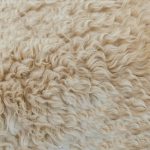Yes, you can safely steam polyamide to remove wrinkles by using low heat and gentle steam. Hold the steamer about six inches away, moving it smoothly to avoid overheating or water spots. Steaming helps relax fibers without harming elasticity or texture. Just be sure not to linger too long in one spot and let your garment air dry fully afterward. If you want to know the step-by-step process and other wrinkle-removal tips, there’s more helpful advice ahead.
Table of Contents
Key Takeaways
- Yes, polyamide can be safely steamed to remove wrinkles using low heat and gentle steam.
- Hold the steamer about 6 inches from the fabric to avoid heat damage and water spots.
- Use smooth vertical strokes, focusing on wrinkled areas without lingering too long in one spot.
- Always hang the garment taut on a sturdy hanger to allow even steam penetration.
- Allow the fabric to air dry completely after steaming to prevent dampness or distortion.
Understanding Polyamide Fabric and Its Properties
Polyamide fabric, commonly known as nylon, offers a durable and lightweight material widely used in clothing and outdoor gear. When you choose polyamide, you’re picking a fabric that resists abrasion and dries quickly, making it ideal for active wear and travel clothes.
It’s also strong, so your garments won’t easily tear or lose shape. However, it’s sensitive to high heat, so you need to handle it carefully when removing wrinkles.
Polyamide feels smooth and can stretch slightly, giving you comfort and flexibility. Because it’s synthetic, it doesn’t absorb moisture like natural fibers, which helps it stay fresh but can affect breathability.
Understanding these properties helps you care for your polyamide items properly, ensuring they last longer and look their best.
Why Steaming Is a Preferred Method for Polyamide
Although high heat can damage synthetic fabrics, steaming offers a gentle way to remove wrinkles without risking burns or melting. When you steam polyamide, you apply moisture and heat evenly, relaxing the fibers without direct contact, which prevents damage.
Steaming gently removes wrinkles from polyamide by evenly applying moisture and heat without direct contact.
You’ll find steaming is preferred for several reasons:
- Fabric Safety: Steaming avoids the high temperatures of irons, reducing the risk of scorching or melting polyamide.
- Ease of Use: You can quickly smooth out wrinkles without needing an ironing board or precise temperature settings.
- Maintains Fabric Integrity: Steaming preserves the elasticity and texture of polyamide, keeping your garment looking fresh longer.
Step-by-Step Guide to Safely Steam Polyamide
When you want to refresh your polyamide garments, steaming them properly guarantees you avoid damage while removing wrinkles effectively.
First, fill your steamer with distilled water and let it heat up fully. Hang your polyamide item on a sturdy hanger to keep it taut.
Hold the steamer about 6 inches away from the fabric to prevent overheating. Move the steamer in smooth, vertical strokes, allowing the steam to penetrate without soaking the material.
Focus on particularly wrinkled areas, but don’t linger too long in one spot. After steaming, let the garment air dry completely before wearing or storing.
Following these steps helps maintain your polyamide’s shape and texture while keeping it wrinkle-free and fresh.
Common Mistakes to Avoid When Steaming Polyamide
If you skip key precautions while steaming, you risk damaging your polyamide garments. To keep your clothes looking their best, avoid these common mistakes:
- Using excessive heat: Polyamide is sensitive to high temperatures. Always use the lowest steam setting to prevent melting or warping the fibers.
- Applying steam too close: Holding the steamer too near can cause water spots or fabric distortion. Maintain a safe distance, around 6-8 inches, to allow gentle steam penetration.
- Steaming over embellishments: Avoid direct steam on beads, sequins, or prints, as moisture and heat can weaken adhesives or cause discoloration.
Alternative Wrinkle Removal Techniques for Polyamide Garments
Steaming isn’t the only way to tackle wrinkles on polyamide garments, especially if you want to avoid potential risks like heat damage or fabric distortion. You can also try these gentle alternatives that keep your clothes safe and smooth.
| Method | How It Works | Best For |
|---|---|---|
| Hanging in Shower | Steam from hot water softens wrinkles | Light wrinkles, quick fix |
| Damp Cloth Press | Place damp cloth, press gently with iron | Stubborn wrinkles, low heat |
| Spray and Smooth | Lightly mist with water, smooth by hand | Delicate fabrics, detail areas |
Try these techniques to keep your polyamide garments wrinkle-free without risking damage.
Frequently Asked Questions
Can Polyamide Fabrics Be Dyed at Home?
You can dye polyamide fabrics at home, but you’ll need a dye designed for synthetic fibers. Use hot water and follow instructions carefully to avoid uneven color. Always protect your workspace and wear gloves.
How Durable Is Polyamide Compared to Other Synthetic Fabrics?
Unlike delicate silk, polyamide’s toughness stands out. You’ll find it more durable than polyester and nylon, resisting abrasion and stretching well. So, if you want long-lasting wear, polyamide’s a smart synthetic choice for you.
Is Polyamide Fabric Environmentally Friendly?
You’ll find polyamide isn’t very environmentally friendly since it’s petroleum-based and non-biodegradable. However, some brands use recycled materials, so choosing those options helps reduce your environmental impact when buying polyamide fabric products.
Can Polyamide Be Machine Washed With Hot Water?
Think of washing polyamide like guiding a delicate dance—hot water can easily trip it up. You shouldn’t machine wash polyamide in hot water; instead, stick to cold or warm settings to keep it strong and smooth.
What Is the Best Way to Store Polyamide Garments?
You should store polyamide garments folded in a cool, dry place away from direct sunlight. Avoid hanging them for long periods to prevent stretching, and keep them away from rough surfaces to prevent snags and damage.
- Does Chiffon Fabric Stink - July 15, 2025
- Does Chiffon Fabric Affect the Economy - July 15, 2025
- Does Cotton Fabric Have a Nap - July 15, 2025







